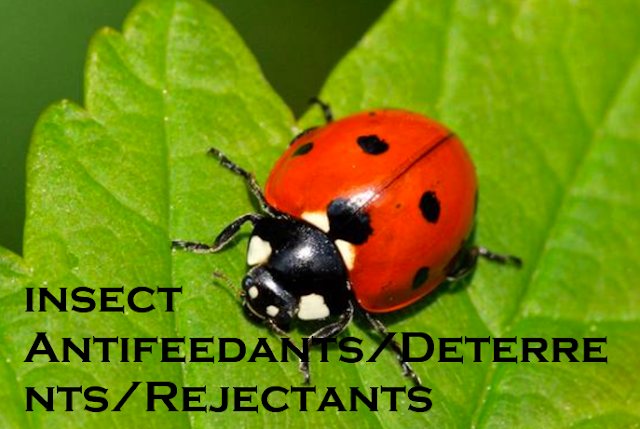Deterrents/Rejectants/Antifeedants insect control (Main functions, Chemical types, Mode of action, Advantages and Disadvantages)
Definition of Antifeedants/Deterrents/Rejectants
Antifeedants are the chemicals which prevent feeding. Detheir et al (1960) proposed the term, feeding deterrent which aptly fits the situation as does possibly term rejectant.
Main functions of Antifeedants Antifeedants insect control
They inhibit feeding but it not toxic to insect.
Chemical types of antifeedants Antifeedants insect control
A. Triazenes: This group includes more than 80 antifeedants. They are tasteless, odourless, solid, nontoxic to insect. These antifeedants are mainly used against chewing type insect but they can also used to against bed bug, cockroach etc. e.g. 4dimethyl triazinol acetanilide.
B. Organotins: e.g. Brestan has been found effective against the potato tuber moth larvae, larvae of Cutworm, sweet potato weevil etc.
C. Carbamates: e.g. Thiocarbamate and phenyl Carbamates with inhibit feeding by beetles such as potato beetle.
D. Botanical extract: Extract of fern can be used as antifeedants against army worms, extract of neem against stored grain pest.
E. Miscellaneous: Several unrelated types of chemical such as cupper stearate, copper resinate, phosphane, carvadan etc. can be used as antifeedants.
Mode of action of antifeedants Antifeedants insect control
Apparently antifeedants inhibit the taste receptor of mouth region so that lacking of proper gustatory stimulus, the insect fails to recognized the treated leaves as food and continuous foraging. Unless the antifeedants comes in contact with these receptors, there is no inhibition of feeding.
Advantages of Antifeedants insect control
1. External feeder insect easily be controlled.
2. Antifeedants do not affect parasites, predators or pollinator like honey bee.
3. Its adverse effect is less on environment.
4. In using antifeedants, insect may turn from crops to weeds.
Disadvantages of Antifeedants insect control
1. Only external feeding insect are prevented from feeding and internal feeders, piercing and sucking insect proboscis burn are not affected.
2. Its action is not rapid and effective in comparison to insecticides.
3. Dosage also appears to be high, compared to insecticides.
If you can’t understand something please comment below…
